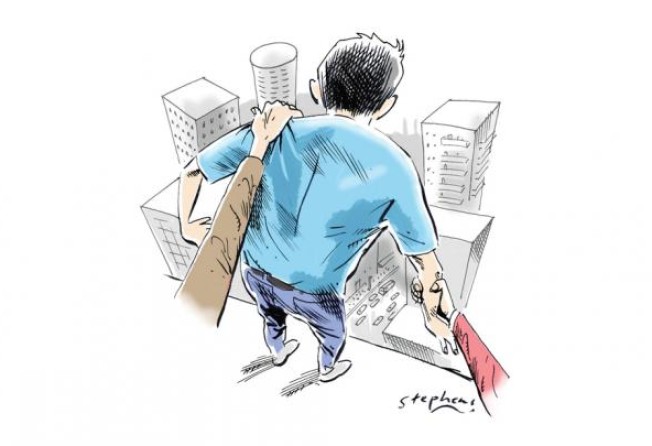Suicide prevention starts with stronger community bonds
Paul Yip attributes the fall in suicide numbers in Hong Kong to the joint effort by different sectors of the community to reach out to those at risk, including the vulnerable elderly and youths

Suicide is still a sensitive topic in Asian countries. Since 1997, Hong Kong has experienced one of the most drastic changes in suicide rates. From a rate of 12.5 per 100,000 in 1997, it hit a historical high of 18.6 in 2003, an almost 50 per cent increase in a seven-year period. Although we have yet to return to 1997 levels, the rate stood at 13.5 per 100,000 last year, representing a substantial reduction of 27 per cent.
Nevertheless, our suicide rate is still higher than the likes of the US (10), Britain (7) and Australia (11), and this fact underscores calls for community participation to tackle problems associated with suicide prevention.
In Hong Kong, where a majority of people live in high-rise buildings, jumping was the most frequent method of suicide for all age groups (52 per cent), with a fatality rate of over 90 per cent. The next most frequent methods were hanging (21 per cent) and charcoal burning (18 per cent).
The elderly have been the largest group to commit suicide over the years, and this has often been linked with symptoms of depression. These people were most likely to be living alone and widowed. Having children and support, including a wider social network, appears to be a protective factor against suicide.
Yet, our latest data also shows a significant rise in teenage suicides or attempted suicide. Among school dropouts, those who are underemployed or jobless, there was a 10- to 20-fold increase in the rate compared with those still at school. Youngsters today face more interpersonal and social difficulties (for example, family break-ups and academic stresses). Our next generation needs more help, especially those in new towns in northern districts like Tin Shui Wai and Yuen Long, which are remote and disconnected.
One life lost is one too many. In our aim to reduce the risk factors, we advocate a public-health approach to suicide prevention, promoting measures to reduce the risks rather than resorting to traditional symptom or disease-oriented treatment. Collaborating with professionals and frontline workers, including physicians, police and security guards, we have developed a community-based suicide prevention programme. We have held training sessions to enhance gatekeepers' understanding of how to prevent suicides as well as mental health literacy in local schools and introduced protocols to round-the-clock outreach crisis intervention.
A community approach has been adopted to reduce the risk of suicide at holiday flats in Cheung Chau. Strategies include refusing to rent flats to singles who appear depressed or emotionally unstable, and approaching distressed visitors. Raising awareness in the community and gaining the support of the police and community leaders are also important. Following the launch of this programme, the number of suicides dropped from over 50 reported in late 2002 to 11 in the following two years.
In addition, many empirical studies found that a lot of suicides were the result of impulsive behaviour, especially in Asia. Hence, we advocate restricting access to means of committing suicide. The installation of screen doors at MTR stations has helped. Similar practices have been adopted in high-rise shopping malls.
We have also carried out comparative studies in limiting access to charcoal bags in supermarkets by removing them from open shelves. This may make potentially suicidal people think twice and it creates a window of opportunity to allow intervention. The Taipei municipality recently launched a similar programme and initial findings are promising. We hope to see more of this kind of collaboration and commitment between government and business in Hong Kong. Finally, we are developing ways to connect p eople who feel cut off from society via the internet.
There is no quick fix for suicide prevention. A holistic and integrated approach is needed. That means support from the government, non-governmental organisations and other community stakeholders. We can all contribute to suicide prevention. Above all, the community needs to urgently find ways of connecting disconnected individuals, especially our youth.
The significant decrease in Hong Kong's suicide rate from 2003 to 2011 is encouraging. It is not down to luck but to the dedicated commitment and hard work of stakeholders on all fronts in the community. It is possible to reduce suicidal behaviour. Let's all work together towards a healthy community.
Paul Yip is director of the Centre for Suicide Research and Prevention and a professor of social work and social administration at the University of Hong Kong